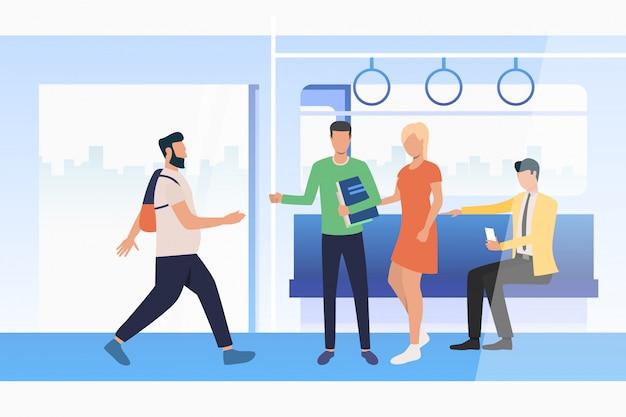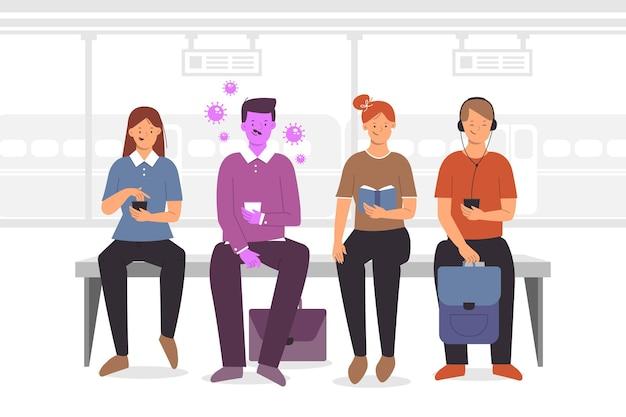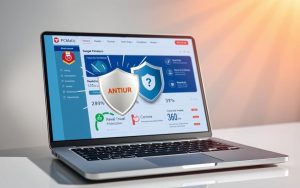Table of Contents
There will always be queues in life. This is something that everyone who works in a business with walk-in customers knows. Manage your waiting lines to run a seamless company, keep consumers pleased and engaged in your brand, and reduce stress for everyone.
A queue management system (QMS) reduces wait times and enhances customer satisfaction. An effective queue management app also uses appointment reminder software to keep clients informed of their waiting status.
But your staff should also be aware of how such software operates! Employees who have been properly trained on QMS can use the system effectively, which improves the customer experience and brings in more sales. Training your personnel involves describing the system’s elements, creating an effective training program, and testing it. Let’s examine this.
Components of a Queue Management System
Managing a queue means taking care of customers or guests in an organized way. This makes sure that people are treated in the order they show up, which cuts down on misunderstanding and anger.
As with the normal method for managing lines, buyers are given a ticket or number when they arrive. After that, the system keeps track of these numbers and sends people to the right service points when it’s their turn.
The most important parts of a queue control system are:
- Ticket Dispenser: When a customer arrives, they are given a ticket with a unique number on it.
- Digital Signage: Shows data about the service clock, the number of people currently being served, and how long they have to wait.
- Service Counters: The service desk staff uses this method to call the next person in line.
- Management Client Scheduling Software: As the brains of the business, this program handles and keeps track of the flow of customers.
Designing an Effective Training Program
A well-thought-out training program is the basis for a good execution. Take a look at these important parts:
- Evaluation of needs: Find out what your staff needs and what they don’t know.
- Goals of the training: Set exercise goals that are clear and can be measured.
- Creating a curriculum: Create an in-depth course plan that covers every part of the QMS.
- Allocation of resources: Make sure that the tools you need are available, like training papers and teachers.
Training Techniques and Methods
Use several teaching strategies to suit diverse learning styles and ensure everyone understands:
- Classroom Training: Regular in-person gatherings where instructors explain QMS theory. These gatherings provide basic information and allow individuals to interact, ask questions, and discuss live. Through speeches, demonstrations, and group activities, trainers may engage and teach.
- Hands-on Training: In hands-on workshops, staff may utilize the QMS immediately. This strategy helps users feel secure and adept with the system. Guided and unguided hands-on training is available. Teachers lead staff through QMS parts during guided practice. Staff may explore the system and ask questions during unguided practice.
- E-learning Modules: Online courses let employees study at their own speed. E-learning packages might include video classes, step-by-step directions on how to use client scheduling and appointment reminder software, and online quizzes. Staff may review knowledge as required, making this a wonderful approach to teaching continuing and recurrent courses. E-learning technologies may monitor students’ progress and performance to ensure staff members complete and comprehend courses.
- Simulation: Realistic models that simulate line management issues. Simulations let workers practice and apply what they’ve learned without worrying about the actual world. Role-playing games, virtual worlds, and training based on staff behavior are examples. Simulations help individuals learn to solve issues and prepare for unexpected ones.
Implementing the Training Program
When putting the training program into action, think about these steps:
- Pilot Training: Test the client scheduling software with a small group at first and get their opinions.
- Full Rollout: Start the training program for everyone in the company.
- Support System: Give your team ongoing help and tools they can use as they learn.
Monitoring and Evaluating Training Effectiveness
To make sure the training program works, it needs to be constantly checked and evaluated. In order to do this, you need the following:
- Feedback Mechanisms: Ask the staff what they think about the teaching process.
- Performance Metrics: Use the QMS’s success data to figure out what needs to be changed.
- Follow-up Training: Based on comments and holes in training, offer more training classes.
In conclusion

A key way to improve customer happiness and boost sales is to teach staff how to use client scheduling software and queue management tools. Advanced QMS systems have been developed by companies like Q-nomy to make managing lines easier. This means that staff must be well-trained. Businesses can make sure their employees are good at using these systems by following an organized training program. This will lead to better service and more speed in the long run.
Would you like to share your ideas regarding the queue management system and staff training necessity? Do not be afraid to leave a comment.









